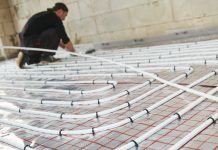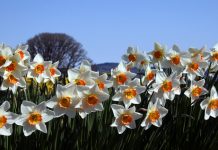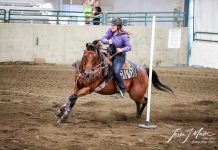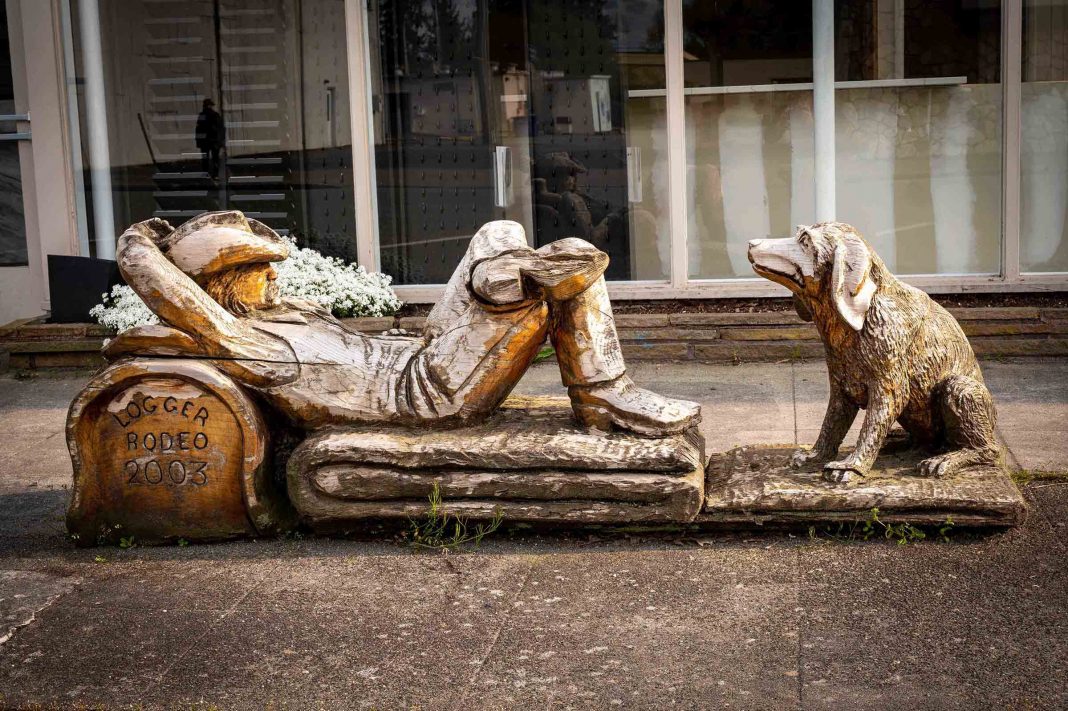Walk along downtown Sedro-Woolley while leisurely peering in store front windows and you will eventually bump into a wooden bear or a stunning mural that brings to life the history of the area. Take a self-guided walking tour of Sedro-Woolley street art and step back in time.
 History of Sedro-Woolley
History of Sedro-Woolley
Before Washington became a state, a man by the name of Mortimer Cook homesteaded a 34-acre area along the Skagit River. This acreage was near the spot of what is now known as Riverfront Park. Among other things, Cook opened a general store and a shingle mill inside this small territory. He eventually titled the settlement Cedra, which morphed into Sedro.
Several years later, in 1890, another man named Phillip A. Woolley pioneered 84 acres just north of the newly formed Sedro. He titled this new settlement Woolley, after himself. Woolley established a flourishing community that centered around a coal processing plant employing 2,000 workers. Needless to say, the two townships struck up a rivalry that lasted many years.
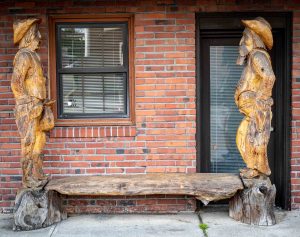
Despite this, there was one common denominator, the railroad. Three major railroad lines traveled to the towns of Sedro and Woolley bringing commerce and tourists willing to spend a little money in these quaint towns at the foot of the Cascade Mountains. The economy this generated was much needed, but by the mid-1890s both towns began to feel the economic woes of the time. The idea of setting aside their rivalry became clearer and in 1898 a merger formed. Keeping both town names, the newly formed union would forever more be known as Sedro-Woolley.
With a population of 11,690 as of 2019 and growing, Sedro-Woolley is a far cry from its humble beginnings. Yet it still fosters deep roots and a long history in industries such as timber and natural resources. This history lives on through the murals and sculptures scattered throughout the downtown corridor.
Sedro-Woolley Wood Chainsaw Carvings and the Loggerodeo
Every July Fourth, Sedro-Woolley hosts the Loggerodeo, which includes several chainsaw carving competitions. The rodeo began 26 years ago as did the chainsaw carvings. All it took was one sculpture to be carved from a cedar log and the art caught on.
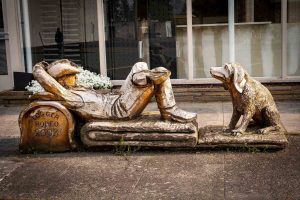
The logs are supplied to each artist by the rodeo and measure 6 to 8 feet tall. During the main event, carvers work with 8-foot-tall logs with a circumference of 36 inches. Then there is the quick carve competition utilizing a 6-foot log measuring 16 inches across. “Carvers have 1 1/2 hours to complete their piece, with an auction held later,” explains Dottie Chandler, Loggerodeo president. The monies from the auction purchases the cedar for the next year’s competition.
Lastly, there is the big finale carving, which is judged by five judges with one people’s choice award. Many of the pieces seen in town are purchased privately or are sponsored by the Loggerodeo themselves. Some are weathered with age, like the relaxing cowboy and his dog, while the more recent additions still show their shine. Find these iconic pieces all along Ferry Street. Stroll up to the Sherriff and Outlaw in front of the dentist office or sight Sasquatch standing sentry in front of the Sedro-Woolley Museum. These sculptures add a certain Pacific Northwest character, whimsy and most definitely evoke a conversation.
Sedro-Woolley Murals
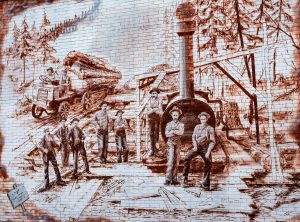
Step back in time promenading the streets of downtown Sedro-Woolley as you stop and ponder the various murals found around town. Many depict the towns rich history of hard work and can-do pioneering spirit.
According to Sharon Howe, research librarian at the Sedro-Woolley Museum, the murals painted in sepia tones were done by an artist named Frederick Sutliffe. He based his paintings on works by photographer Darius Kinsey. The collection of these photographs can be seen on display in the museum. They depict the early years of this area capturing life in the wild west woods. Sutliffe painted the murals from 1989 to 1991, all in sepia tones.
A few other murals followed, which are painted in color. The most prominent mural can be seen in Hammer Heritage Square, located on the corner of Metcalf Street and Ferry Street, where the Wednesday Farmers Market takes place. A mural bringing together the outdoorsy culture and colorful history of Sedro-Woolley. It was painted in 2004-2005 as the park was being built. Encompassing a full side wall, this mural shows the railroad coming into town brought to life with vivid imagery of the smoke from its chugging engine against a very rugged landscape. The artist to this masterpiece was John Maddox. In the bottom left corner, he signed the mural in the form of a “wanted” poster nailed to a tree. It reads:
-
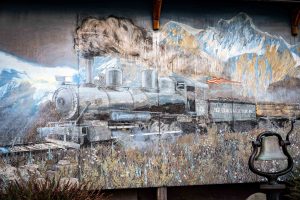
Sedro-Wooley Hammer Heritage Square showcases a prominent mural of the town. Photo credit: Richard Schmitz Madd Artist Name: John Maddox
- Alias: The Bald Dude
- Last Spotted: Fighting the Mural Deadline
- Crime: Brush onslaught with the intent to paint.
- Gang Members: I won’t list them all.
Specific history on the murals can be found at the museum where Sharon Howe may be able to offer some insight through past “Self- Guiding Walking Tour” pamphlets. A walk-through Sedro-Woolley will give you a glimpse into those bygone years connecting today’s present with yesterday’s past. And it is all seen through the lens of street art.



